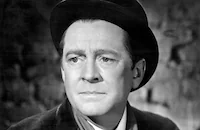Deliverance

Brief Synopsis
Cast & Crew
George Foster Platt
Little Etna Ross
Edythe Lyle
Roy Stewart
Betty Schade
Tula Belle
Film Details
Technical Specs

Synopsis
In her infancy, Helen Keller loses her sight and hearing. When Helen is seven, her parents hire Anne Sullivan, who herself was blind for seventeen years, to educate her. Ignorance, depicted as an allegorical figure, seeks Helen as his victim, while Knowledge, a woman robed in white, struggles to raise Helen to the realm of spiritual freedom. Despite Helen's often unmanageable willfulness, the tender care of her parents and Anne's patient instruction enable Helen to learn the names of objects and places through a system of signs. Later, through the efforts of noted educator Sarah Fuller, Helen learns oral speech. Meanwhile, Nadja, the daughter of an immigrant agricultural laborer, is unwilling to take advantage of educational opportunities in her school, and although she has all her faculties, is handicapped by Ignorance. After college, Helen meets some of the distinguished men of her time. Nadja, who works in a sweatshop, is rescued from an unpleasant incident by Josef, an immigrant violinist. They marry, but Josef, worn out by his failure to get work, dies before their child is born. Later, Nadja's child returns from World War I blind, and Nadja takes him to Helen, her childhood friend, for advice. Helen begins hospital work with Nadja to help with the rehabilitation of blind and crippled soldiers. Helen inspires councils dealing with the great world problems, and is seen horseback riding, in an airplane, and christening a ship. She sends words of cheer to farmers, laborers and immigrants. Finally, Helen, Nadja and Josef as a boy appear on horseback leading a great concourse of people in a demonstration of the ideals of the world's new era.

Director
George Foster Platt
Cast
Little Etna Ross
Edythe Lyle
Roy Stewart
Betty Schade
Tula Belle
John Cosgrove
Mary Tolenski
Joy Montana
Edythe Chapman
Jenny Lind
Sarah Lind

James Dunn
James Warfield
Davies Thompson
Elmo Lincoln
Charlotte Mesreau
Harold Judson
Ann Mason
Flora Braidwood
Josef De Serino
Ivan Tchkowski
Herbert Hayes
Thomas Jefferson
James Howarth
Henry Russell
Helen Keller
Mrs. Anne Sullivan Macy
Mrs. Kate Adams Keller
Phillips Brooks Keller
Polly Thomson
Ardita Mellinino
Parke Jones
Crew

Film Details
Technical Specs

Quotes
Trivia
Notes
Dr. Francis Trevelyan Miller, who wrote the story and scenario, was an historian, editor emeritus of The Journal of American History and a friend of Helen Keller. Edwin Leibfreed, the copyright claimant, who presented the version shown in New York, also wrote some insert titles in verse. The film had its premiere in nine reels at the Lyric Theatre in New York on August 18, 1919. Dr. Anselm Goetzl of the Metropolitan orchestra, who arranged the accompanying music, conducted the augmented orchestra at the opening. The film was divided into three acts, the first entitled "Childhood," the second "Maidenhood," and the third "Womanhood." According to a news item, director George Foster Platt shot the film in a style that emphasized the playing of scenes as they would be played on stage, and used very few close-ups or "cut-aways." After the New York run, George Kleine acquired the distribution rights. He had the negative of over 40,000 feet recut to various lengths between six and seven reels for the standard version, and ten reels for road shows. He also had new titles written. After test showings in Atlanta, Madison, WI and possibly a few other cities, he planned in February 1920 to open the film in Cleveland, Cincinnati and Columbus, OH before releasing it elsewhere, but it is unclear when the film was actually exhibited. George Kleine presented his version which had the subtitle "My Message to the World."












